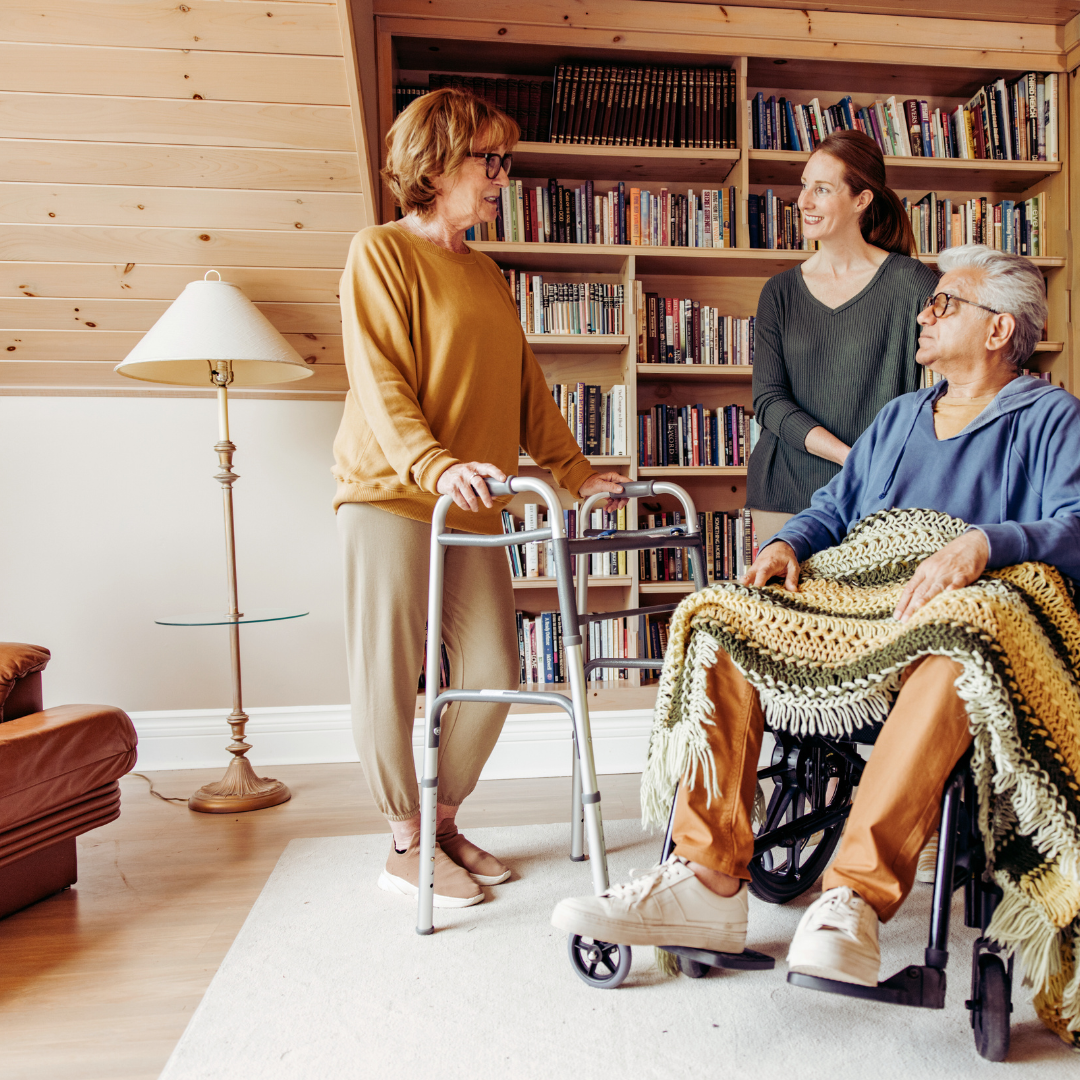Creating a safe home for ageing parents is crucial to their well-being. Implementing simple modifications can significantly reduce risks and enhance their quality of life. It’s essential to consider their specific needs and the unique challenges that come with ageing.
Addressing hazards such as slips, trips, and falls is a primary concern. Installing grab bars in bathrooms and ensuring adequate lighting throughout the home can make a substantial difference. Beyond physical changes, fostering a supportive environment through regular check-ins and clear communication also plays a vital role.
Ultimately, taking proactive steps not only protects ageing parents but also provides peace of mind for the entire family. Assessing their living space and making necessary adjustments can create a nurturing atmosphere that allows them to maintain independence safely.
Elderly loved ones face a lot of hurdles as the years go on, so it is vital that you provide them with home adjustments and walking mobility aids to ensure that they are safe no matter where they are.
Assessing and Enhancing Home Safety
To create a safe home environment for aging parents, assessing and enhancing safety features is crucial. This involves identifying obstacles that may cause falls and ensuring adequate support systems are in place. Careful attention to these areas can significantly reduce the risk of accidents.
Identifying and Removing Tripping Hazards
Many homes contain hidden hazards that can lead to trips and falls. Common culpr26/09/2024 its include loose rugs, cluttered hallways, and uneven flooring. She should ensure that:
- Rugs are secured with non-slip backing or removed entirely.
- Hallways are clear of any items such as shoes or boxes.
- Floor surfaces are even, repairing any cracks or lifting tiles are repaired.
A thorough inspection should also consider outdoor areas. Uneven walkways, garden hoses, and debris can also present hazards. Regular maintenance and a clear approach can improve safety significantly.
Improving Lighting and Visibility
Adequate lighting is vital for visibility, especially in areas where aging parents navigate frequently. She should focus on the following:
- Install bright LED bulbs in all rooms, particularly staircases and hallways.
- Consider motion-sensor lights for outdoor pathways and entrances.
- Ensure light switches are easily accessible from all entry points.
Natural light should be maximized by keeping windows clean and unobstructed. Key areas, such as closets, should also have adequate lighting. Well-lit spaces reduce the chances of accidents and give peace of mind.
Installing Handrails and Grab Bars
Support structures are essential in providing stability throughout the home. Handrails and grab bars should be installed in critical locations. The focus areas include:
- Staircases: Handrails should be present on both sides and securely anchored.
- Bathrooms: Grab bars need to be placed near toilets and bathtubs to assist in safe transitions.
- Entrances: Outdoor handrails can help when navigating steps.
These installations must comply with safety codes and be positioned appropriately for effective use. Properly installed supports can significantly enhance mobility and independence for elderly parents.
Creating Accessible Living Spaces
Creating accessible living spaces is essential for ensuring the safety and comfort of aging parents. Focused modifications can enhance independence while reducing the risk of accidents.
Adapting Bathrooms for Safety
Bathrooms can be hazardous for elderly individuals due to moisture and potential falls. First, installing grab bars near the toilet and inside the shower can provide stability. A shower chair is also vital, allowing them to sit while bathing, thus minimizing slip risks. Non-slip mats should be placed on the floor to prevent falls.
Consider adjusting the showerhead for ease of access. A handheld showerhead allows for flexible use while seated. Ensure that the water temperature is regulated to prevent burns. Finally, a raised toilet seat can make it easier for them to sit and stand, promoting safety and comfort.
Optimizing Bedroom Comfort
The bedroom should promote relaxation and independence. An adjustable bed can help aging parents find a comfortable position for sleeping or resting. It can also aid in sitting up without assistance, enhancing accessibility.
Keeping essential items within reach is crucial. Nightstands should have adequate lighting, medication, and any personal items like glasses or phones close by. Removing clutter from the floor and using flat, sturdy pathways can further reduce trip hazards.
Consider using bed rails to prevent falls during the night. They provide the necessary support for getting in and out of bed safely. Ensuring that the bedroom has a clear exit path is vital for emergency situations.
Ensuring Step-Free Entry and Mobility
Creating a step-free entry is vital for those with mobility challenges. Wider doorways allow for easier navigation, especially for walkers or wheelchairs. Install ramps where required to allow smooth access.
Mobility improvements should go hand in hand with home security upgrades. For seniors, strong door locks that don’t require excessive force or fine motor skills can prevent both physical strain and unwanted access.
In this regard, choosing locks designed for ease of use and durability is essential to maintain both safety and independence. Proper installation of such locks can be crucial, and a skilled Locksmith Willesden (or elsewhere) can provide the expertise needed to ensure everything can work smoothly.
Inside the home, clear furniture layouts can help facilitate movement. Avoid placing furniture in ways that restrict pathways. Supportive handrails along corridors can aid in maintaining balance.
Outdoor paths should be even, well-lit, and clear of obstacles. Regular maintenance of walkways ensures safety, especially in inclement weather. A well-planned layout promotes independence and mobility for aging parents, ensuring they feel secure in their home environment.
Supporting Health and Daily Living Needs
Creating a safe home for aging parents involves addressing their health and daily living needs. Proper planning can enhance their quality of life and ensure they receive necessary support.
Home Care and Assistance Options
Home care services provide meaningful support for elderly parents who wish to stay independent, offering help with daily tasks like bathing, dressing, cooking, and cleaning. If you need to find care at home in Southend or other areas, an online search can highlight local providers who offer tailored in-home assistance suited to individual needs. However, as care needs increase or when social connection and access to on-site support become more important, families often begin exploring other options, such as seniors independent living and assisted living. These communities can offer a safer, more engaging environment where seniors can enjoy daily activities, connect with others, and receive the support they need without giving up their independence.
Families should consider the following options:
- Professional Home Care Agencies: Hiring trained caregivers can help meet daily needs while providing companionship.
- Medical Home Health Services: These services offer nursing care, physical therapy, and other medical support at home.
- Respite Care: Temporary relief for family caregivers can be crucial, allowing them to rest while ensuring their loved ones are cared for.
It’s essential to evaluate needs thoroughly and select appropriate care options that fit within family budgets.
Preparing for Medical Emergencies
Being prepared for medical emergencies is vital for aging parents. This preparation can greatly impact their safety and well-being.
Key steps include:
- Emergency Contacts: Keep a list of important contacts, including doctors, family members, and neighbors, easily accessible.
- Medical Information Overview: Create a document that details medical history, medications, allergies, and current treatments.
- First Aid Kit: Maintain a well-stocked first aid kit at home, including necessary supplies and medications.
Establishing a clear plan helps ensure immediate assistance is available if needed.
Establishing a Health Care Proxy
A health care proxy is essential for making medical decisions on behalf of elderly parents when they cannot do so themselves. This legal document designates a trusted individual to handle health care matters.
Steps to establish a health care proxy include:
- Choose a Trusted Person: Select someone who understands the parent’s values and wishes regarding medical care.
- Discuss Wishes: Open conversations about medical preferences and end-of-life care can significantly impact decision-making.
- Legal Documentation: Complete the necessary forms and consult with legal professionals to ensure validity.
This proactive approach can help alleviate stress and uncertainty during critical times.
Long-Term Alternatives and Planning
Planning long-term care for aging parents involves understanding when to consider professional facilities and how to support their independence. These two aspects are crucial in ensuring their safety and happiness over time.
When to Consider a Nursing Home
Choosing a nursing home may become necessary when safety and health needs exceed what can be managed at home. Key indicators include:
- Health Decline: Frequent hospitalizations or new medical conditions.
- Personal Care Needs: Difficulty with daily activities like bathing, dressing, or feeding.
- Safety Concerns: Increased risk of falls or accidents.
It’s essential to assess their condition regularly. Research nursing homes in advance, considering location, staff-to-patient ratios, and services provided. A facility offering specialized care can enhance their well-being significantly.
Maintaining Independence Over Time
Encouraging independence in aging parents is vital for their mental and emotional health. Strategies to maintain autonomy include:
- Home Modifications: Install grab bars, clear pathways, and provide efficient lighting.
- Assistive Devices: Incorporate walkers or emergency alert systems.
- Regular Visits: Frequent family visits help boost morale and assess needs.
Engaging them in decision-making about their care reinforces a sense of control. Establishing a routine fosters familiarity and comfort, allowing them to lead fulfilling lives while ensuring safety.





Be the first to reply